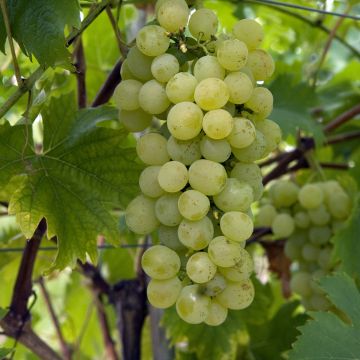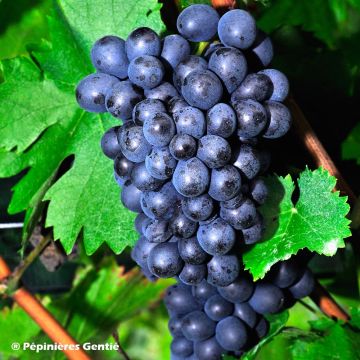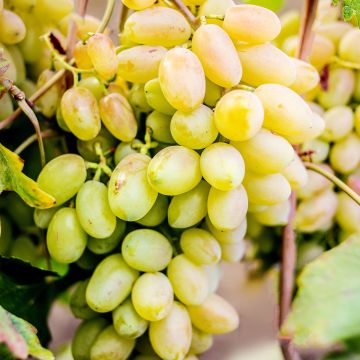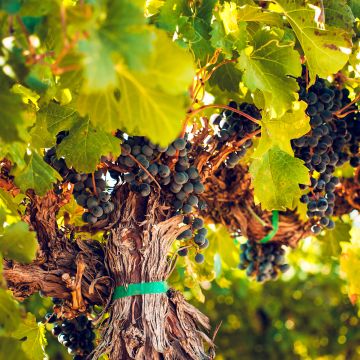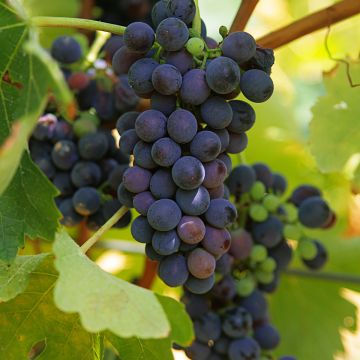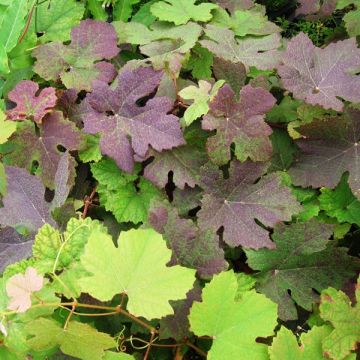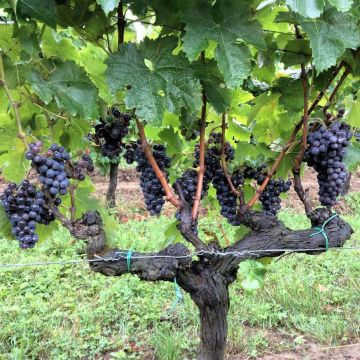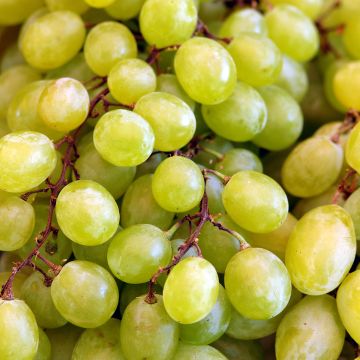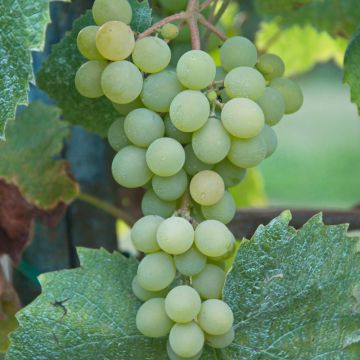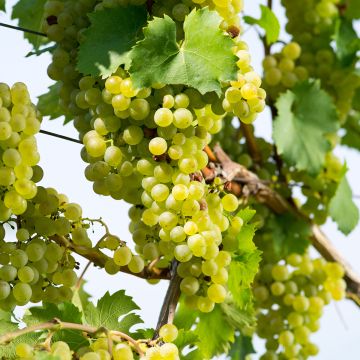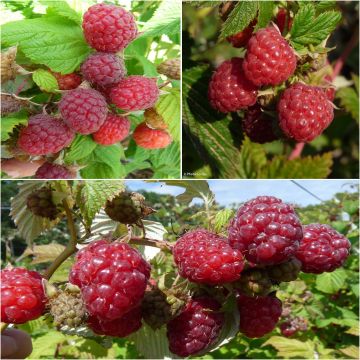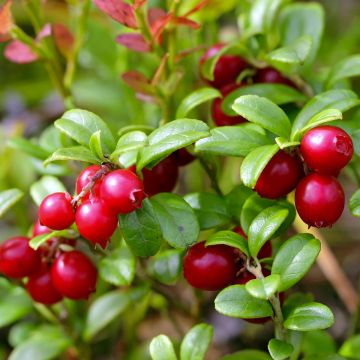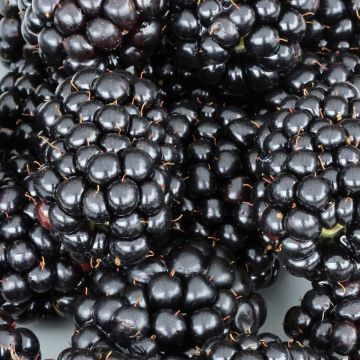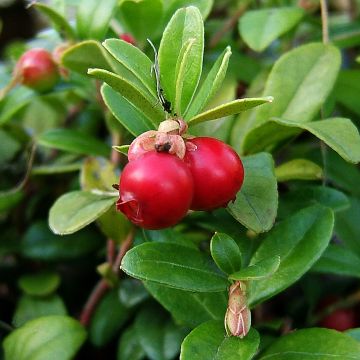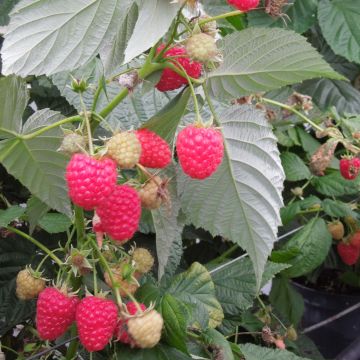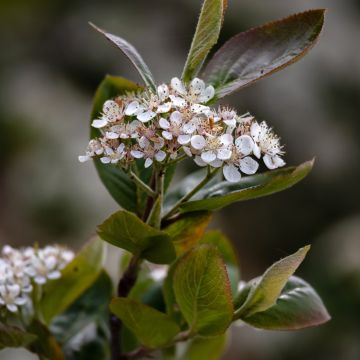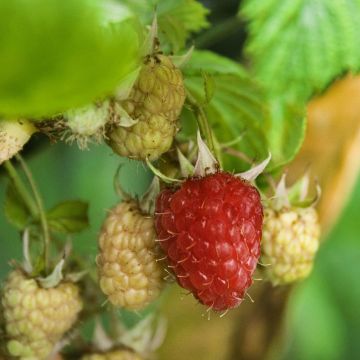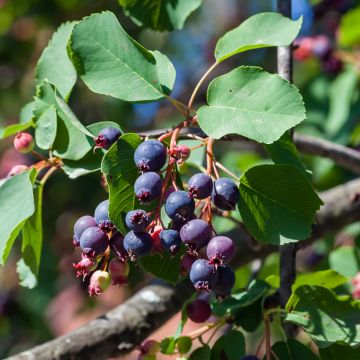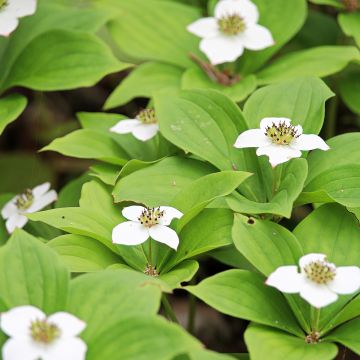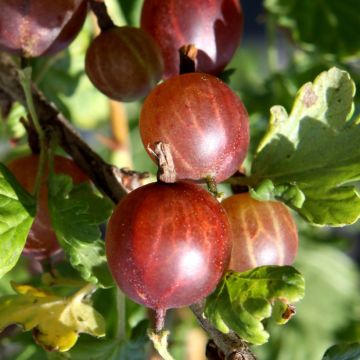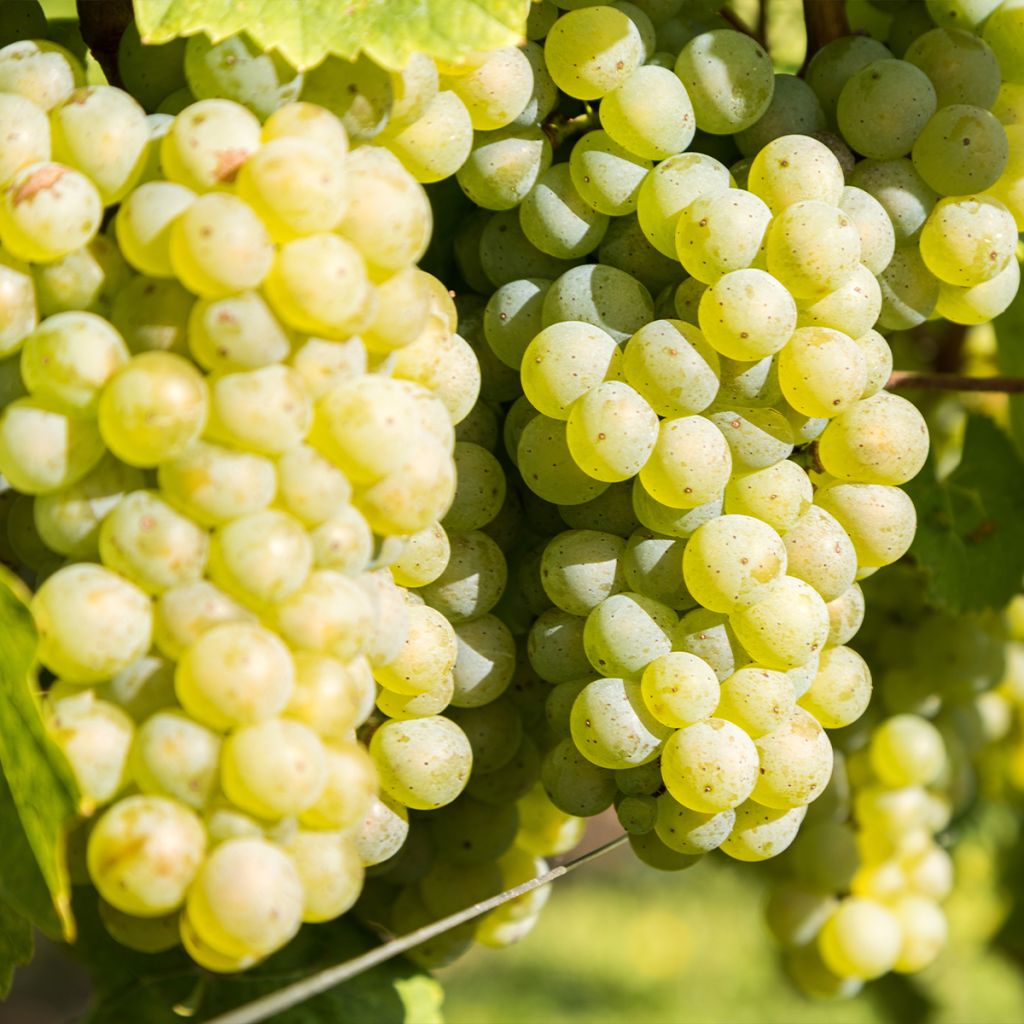

Vitis vinifera Lakemont - Grape vine
Vitis vinifera Lakemont - Grape vine
Vitis vinifera Lakemont
Common Grape Vine, European Grape, Wine Grape
This item cannot be shipped to the selected country
Delivery charge from €5.90
Delivery to Corse prohibited
More information
Schedule delivery date,
and select date in basket
This plant carries a 6 months recovery warranty
More information
We guarantee the quality of our plants for a full growing cycle, and will replace at our expense any plant that fails to recover under normal climatic and planting conditions.
From €5.90 for pickup delivery and €6.90 for home delivery
Express home delivery from €8.90.
Delivery to Corse prohibited: UE law prohibits the import of this plant from mainland France to Corse as part of the fight against Xylella fastidiosa. Please accept our sincere apologies.
More information
Description
The 'Lakemont' grape is a variety of medium vigour, limiting its growth to 2.50m (8ft) in height, and can be trained on a trellis or arbor. This variety provides a sweet, seedless, golden yellow table grape, good for harvesting from mid-September. The clusters are medium to large and bear medium-sized berries. It is one of the most disease-resistant varieties, including the dreaded mildew. Resistant to cold, this variety is particularly interesting for grape enthusiasts. This vine will thrive in most neutral to limestone soils, well-drained in sunny exposure, as it appreciates the heat.
The wine grape (Vitis vinifera) grew wild over 5000 years ago in North and Central America, Europe, and Central and Eastern Asia. The subspecies sylvestris still exists, it is a climbing vine, growing on the edge of forests and capable of reaching great heights in trees. Its introduction to France for cultivation was done by the Phocaeans in Provence, around 600 BC. The current varieties, known as grape varieties, are related to the subspecies vinifera (although there are other cultivated species, but very few). Economically, wine grapes dominate table grapes, with over 200 authorised grape varieties in France, the result of centuries of selection work.
'Lakemont' is the result of a crossbreeding carried out in 1972 by the American John Einset at the experimental and vine selection station in Geneva, United States (state of New York). Its parents are 'Ontario' (a white grape variety resulting from the crossbreeding between 'Winchell' and 'Diamond' in 1908) and 'Sultanina', a historic variety from Persia (present-day Iran) and widely consumed as raisins. It is a table grape variety, but it can also be used for winemaking. A sarmentous climbing shrub of medium vigour, the 'Lakemont' vine has a semi-erect habit and limited growth to 2.5m (8ft) in height with an equivalent spread if not pruned. It needs to be trained with long pruning and trained on a trellis or arbor. Its foliage consists of large, vibrant green leaves. The herbaceous branches bear tendrils that allow the plant to cling to the support provided. Its flowering occurs in June, or even July depending on the year and region, offering very small greenish flowers gathered in medium to large, cylindrical, and fairly long clusters. Like most grapes, it is self-fertile.
The berries, initially green-yellow in colour, turn golden yellow when ripe, and may even evolve towards amber brown, with a fine whitish bloom on the surface. The juicy flesh is very sweet, with an aftertaste reminiscent of honey or muscat. These grapes have the additional advantage of not forming seeds. It is useful to perform green pruning to remove certain leaves so that the grapes are well exposed to the sun and can acquire this beautiful golden colour, a sign of their ripeness. Very hardy (up to -20°C (-4°F), or even -25°C (-13°F)), this vine grows in full sun, as it particularly appreciates warm exposures. It thrives in neutral to limestone soil, or slightly acidic, well-drained soils. An ordinary, even rocky soil is sufficient, as long as it is not too dry. Too rich soil or excessive fertilisation will benefit the vegetation more than the fruits. Simply apply organic fertiliser after harvest for the plant's winter storage. Your vine will use it to start well in the following spring.
'Lakemont' grapes can be consumed as table grapes or in juice, for example in a vitamin-packed fruit cocktail for breakfast. In general, grapes are rich in B vitamins, a source of dietary fibre and manganese, and well-endowed with antioxidants. They are also believed to play a role in preventing cardiovascular diseases, and above all, they are a healthy, natural, and delicious dessert. The limited development of 'Lakemont' makes it easy to train on a trellis. To vary the pleasures, you can plant a thornless blackberry like the Loganberry nearby, a climbing variety with similar growth, which will give you large sweet and tart fruits from August to October.
Report an error about the product description
Vitis vinifera Lakemont - Grape vine in pictures
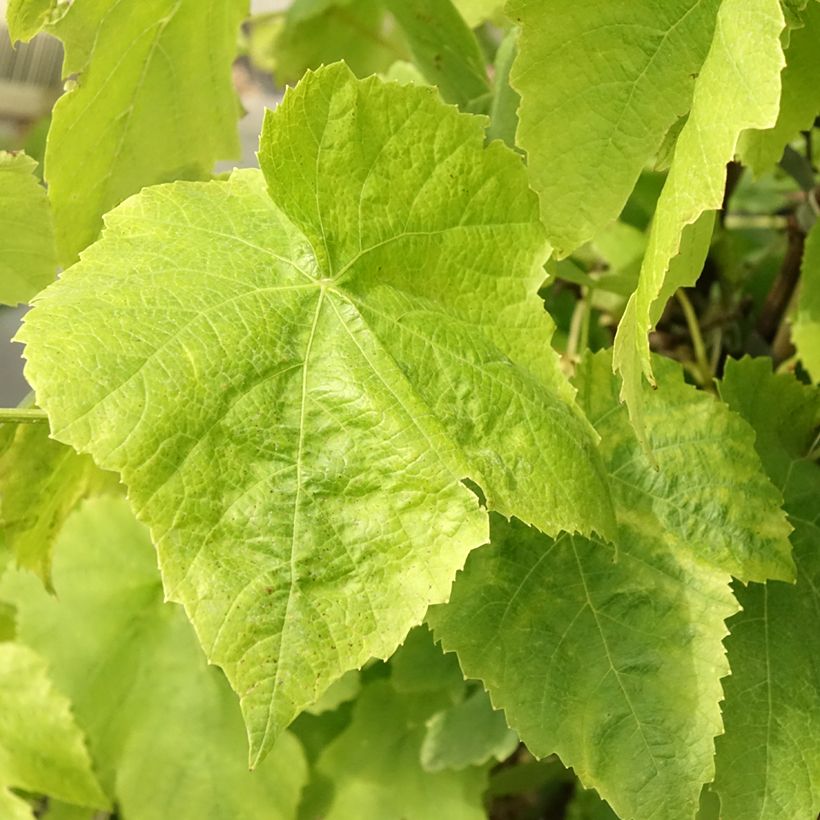

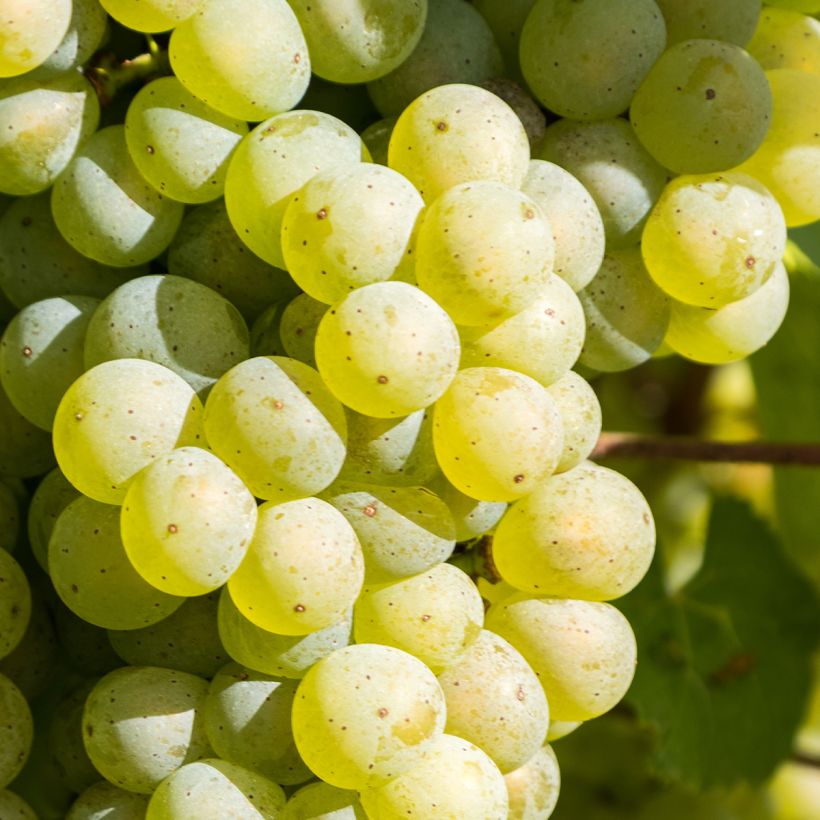

Plant habit
Fruit
Flowering
Foliage
Botanical data
Vitis
vinifera
Lakemont
Vitaceae
Common Grape Vine, European Grape, Wine Grape
Cultivar or hybrid
Other Grapevines
Planting and care
Since the ravages of phylloxera in the late 19th century, grape vines are obligatorily grafted onto different rootstocks, resistant to this disease and adapted to different types of soil. These rootstocks come from American varieties. Plant the 'Lakemont' vine in the autumn, in a deep, well-drained soil—even stony, arid, poor and chalky substrates—in a well-exposed site, sheltered from strong winds. Incorporate 3 or 4 handfuls of fertiliser for fruit trees and 2 kg of composted manure for each plant into the soil. The roots should not come into contact with the manure. After planting, prune above 2 large buds to encourage the growth of two branches. Keep the most vigorous one, and tie it to a stake. The training pruning will follow.
The vine does not require regular fertiliser application for good yield. On the contrary; enrich the soil with potash slag, crushed horn or iron chelate, only every 2-3 years.
Planting period
Intended location
Care
-
, onOrder confirmed
Reply from on Promesse de fleurs
Berries
Haven't found what you were looking for?
Hardiness is the lowest winter temperature a plant can endure without suffering serious damage or even dying. However, hardiness is affected by location (a sheltered area, such as a patio), protection (winter cover) and soil type (hardiness is improved by well-drained soil).

Photo Sharing Terms & Conditions
In order to encourage gardeners to interact and share their experiences, Promesse de fleurs offers various media enabling content to be uploaded onto its Site - in particular via the ‘Photo sharing’ module.
The User agrees to refrain from:
- Posting any content that is illegal, prejudicial, insulting, racist, inciteful to hatred, revisionist, contrary to public decency, that infringes on privacy or on the privacy rights of third parties, in particular the publicity rights of persons and goods, intellectual property rights, or the right to privacy.
- Submitting content on behalf of a third party;
- Impersonate the identity of a third party and/or publish any personal information about a third party;
In general, the User undertakes to refrain from any unethical behaviour.
All Content (in particular text, comments, files, images, photos, videos, creative works, etc.), which may be subject to property or intellectual property rights, image or other private rights, shall remain the property of the User, subject to the limited rights granted by the terms of the licence granted by Promesse de fleurs as stated below. Users are at liberty to publish or not to publish such Content on the Site, notably via the ‘Photo Sharing’ facility, and accept that this Content shall be made public and freely accessible, notably on the Internet.
Users further acknowledge, undertake to have ,and guarantee that they hold all necessary rights and permissions to publish such material on the Site, in particular with regard to the legislation in force pertaining to any privacy, property, intellectual property, image, or contractual rights, or rights of any other nature. By publishing such Content on the Site, Users acknowledge accepting full liability as publishers of the Content within the meaning of the law, and grant Promesse de fleurs, free of charge, an inclusive, worldwide licence for the said Content for the entire duration of its publication, including all reproduction, representation, up/downloading, displaying, performing, transmission, and storage rights.
Users also grant permission for their name to be linked to the Content and accept that this link may not always be made available.
By engaging in posting material, Users consent to their Content becoming automatically accessible on the Internet, in particular on other sites and/or blogs and/or web pages of the Promesse de fleurs site, including in particular social pages and the Promesse de fleurs catalogue.
Users may secure the removal of entrusted content free of charge by issuing a simple request via our contact form.
The flowering period indicated on our website applies to countries and regions located in USDA zone 8 (France, the United Kingdom, Ireland, the Netherlands, etc.)
It will vary according to where you live:
- In zones 9 to 10 (Italy, Spain, Greece, etc.), flowering will occur about 2 to 4 weeks earlier.
- In zones 6 to 7 (Germany, Poland, Slovenia, and lower mountainous regions), flowering will be delayed by 2 to 3 weeks.
- In zone 5 (Central Europe, Scandinavia), blooming will be delayed by 3 to 5 weeks.
In temperate climates, pruning of spring-flowering shrubs (forsythia, spireas, etc.) should be done just after flowering.
Pruning of summer-flowering shrubs (Indian Lilac, Perovskia, etc.) can be done in winter or spring.
In cold regions as well as with frost-sensitive plants, avoid pruning too early when severe frosts may still occur.
The planting period indicated on our website applies to countries and regions located in USDA zone 8 (France, United Kingdom, Ireland, Netherlands).
It will vary according to where you live:
- In Mediterranean zones (Marseille, Madrid, Milan, etc.), autumn and winter are the best planting periods.
- In continental zones (Strasbourg, Munich, Vienna, etc.), delay planting by 2 to 3 weeks in spring and bring it forward by 2 to 4 weeks in autumn.
- In mountainous regions (the Alps, Pyrenees, Carpathians, etc.), it is best to plant in late spring (May-June) or late summer (August-September).
The harvesting period indicated on our website applies to countries and regions in USDA zone 8 (France, England, Ireland, the Netherlands).
In colder areas (Scandinavia, Poland, Austria...) fruit and vegetable harvests are likely to be delayed by 3-4 weeks.
In warmer areas (Italy, Spain, Greece, etc.), harvesting will probably take place earlier, depending on weather conditions.
The sowing periods indicated on our website apply to countries and regions within USDA Zone 8 (France, UK, Ireland, Netherlands).
In colder areas (Scandinavia, Poland, Austria...), delay any outdoor sowing by 3-4 weeks, or sow under glass.
In warmer climes (Italy, Spain, Greece, etc.), bring outdoor sowing forward by a few weeks.

































